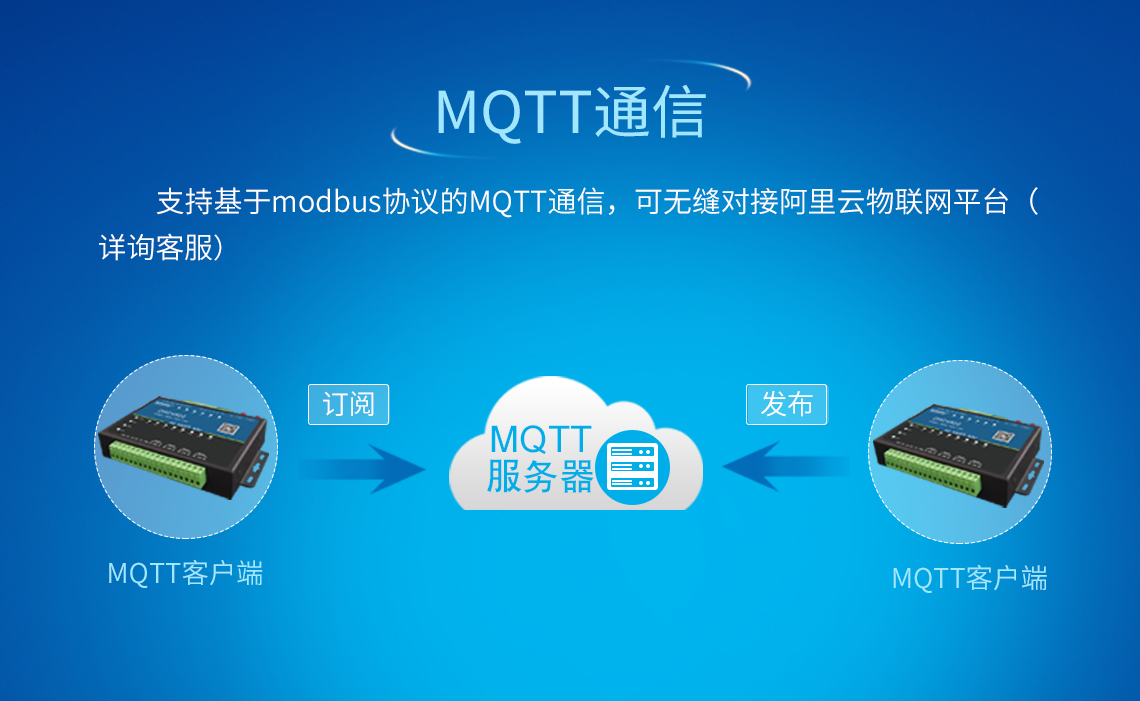In the past few years, mobile broadband has developed rapidly and has covered more than 2 billion customers. More and more people, organizations and institutions have joined the fully connected world. In the fully connected world, except for the most important people, we We have also seen that smart glasses, home appliances, value-added elevators and various machine terminals are connected to human activities, and the “things” connected to the network are also growing rapidly. With the access of a large number of “things”, the Internet of Things industry is also booming. However, the Internet of Things industry faces some challenges in the development process. What are the specific challenges? Let’s take a look together!

The first challenge: New business launch cycle is long
IoT terminal collectors usually refer to those who have access to their own platforms, and the application fragmentation is serious, leading to problems such as long product development cycles and slow product launches.
The second challenge: inconsistent standards and difficult integration
There are many terminal sensor manufacturers, numerous communication protocols, inconsistent standards, and difficult integration.
The third challenge: complex network connections
The IoT environment is relatively complex, with many types of networks. Manufacturers developing terminals need to adapt to many protocols, and the threshold for manufacturers to enter the IoT field is high.
Focusing on core competitiveness and developing IoT business requires a platform with decoupled terminal access, open capabilities, and safe and reliable support.
The main functions of the IOT connection management platform are divided into two parts:
The first function: decoupling terminal access, opening up terminal access, and reducing manufacturers’ terminal development costs.
The second function is capability opening: open business application expansion, providing a unified API interface to facilitate manufacturers to develop applications.
When it comes to IoT connection management platforms, there are two important IoT protocols, MQTT and CoAP. These two important IoT protocols, MQTT and CoAP, are similar to these two protocols and are familiar to everyone, as well as HTTP (Hypertext Transfer Protocol). It is the most widely used network protocol on the Internet. Although WWW files must comply with this standard, MQTT and CoAP are currently the most widely used network protocols on the Internet of Things.
The platform usually provides MQTT and CoAP, as well as the previously mentioned HTTP protocol network interface, to facilitate terminal device adaptation and access.
1. MQTT
The full English name of MQTT is Message Queuing Telemetry Transport, and its Chinese name is Message Queuing Telemetry Transport. It is based on TCP/IP and is an instant messaging protocol developed by IBM. The MQTT protocol adopts a subscription-publish working model. The client wants to subscribe to the server for information of interest, and the server pushes the information to the client that has subscribed to this type of information.
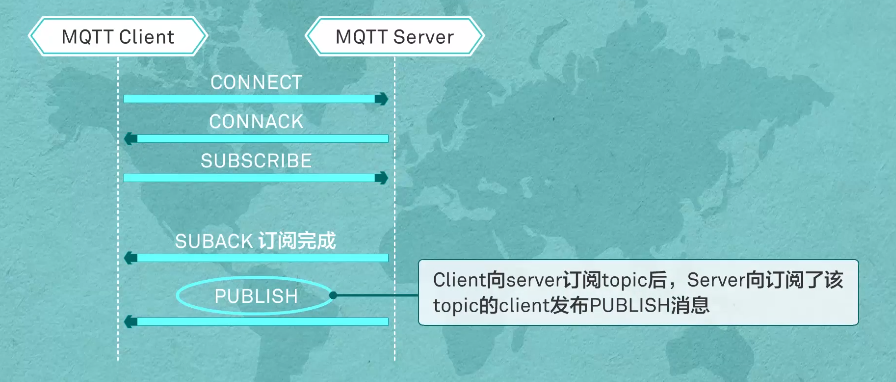
MQTT uses a long connection method and has a heartbeat keep-alive mechanism to reduce chain reconstruction overhead. It supports real-time notification of messages and has rich push content. However, the heartbeat mechanism is not conducive to the device entering sleep mode and the device consumes more power.
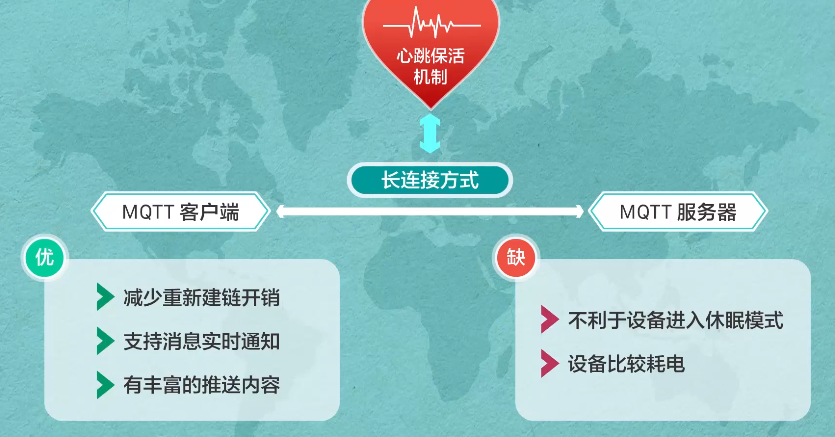
After understanding its working mode and connection method, let’s take a look at the advantages of the MQTT communication protocol:
(1) The MQTT protocol is simple
(2) Lightweight
(3) Messages can be as short as 2 bytes
(4) Low requirements for terminal equipment configuration
(4) Suitable for situations where CPU and other hardware equipment resources are limited, helping to reduce terminal costs
The characteristics of MQTT are very consistent with the requirements of the Internet of Things field. Currently, smart home solutions mainly use the MQTT protocol.
2. CoAP protocol
The English name of the CoAP protocol is Constrained Application Protocol, and the Chinese name is: Restricted Application Protocol. CoAP is specifically designed for communication with resource-constrained devices, such as sensor nodes, and NB-IoT/LoRa networks. CoAP is developed from the HTTP protocol. The CoAP protocol also adopts a request-response working mode. The client sends a request and the server responds.
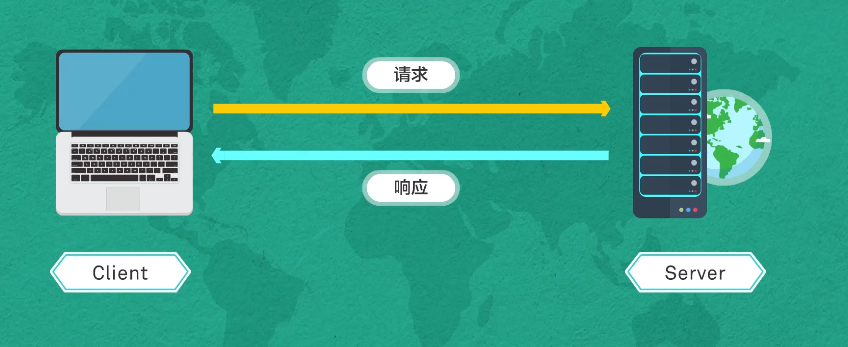
The CoAP transport layer uses the UDP protocol to reduce network overhead and support multicast functions. In order to make up for the unreliability of UDP transmission, CoAP has a message retransmission mechanism. In order to overcome the disadvantages of HTTP for restricted environments, CoAP takes into account both the optimization of data length and the provision of reliable communication.
CoAP header is compressed, the message format is simple, and the message can be very short. The smallest CoAP message is only 4 bytes.

3. Comparison between MQTT and CoAP
Let’s compare the two protocols, MQTT and CoAP.
Different from MQTT, CoAP does not support long connections and does not need to continuously send heartbeat messages. When there is no business, the device does not need to send messages to the outside. When doing business, the device needs to wake up first, and the real-time nature of the messages is not good. Compared with MQTT, CoAP is more suitable for devices that require a sleep and wake-up mechanism in IoT scenarios. The device can be in sleep mode for a long time, saving power. A battery can be used for 10 years or more. It is currently mainly used in smart water meters and smart electricity meters. Smart agriculture, smart parking and other solutions.
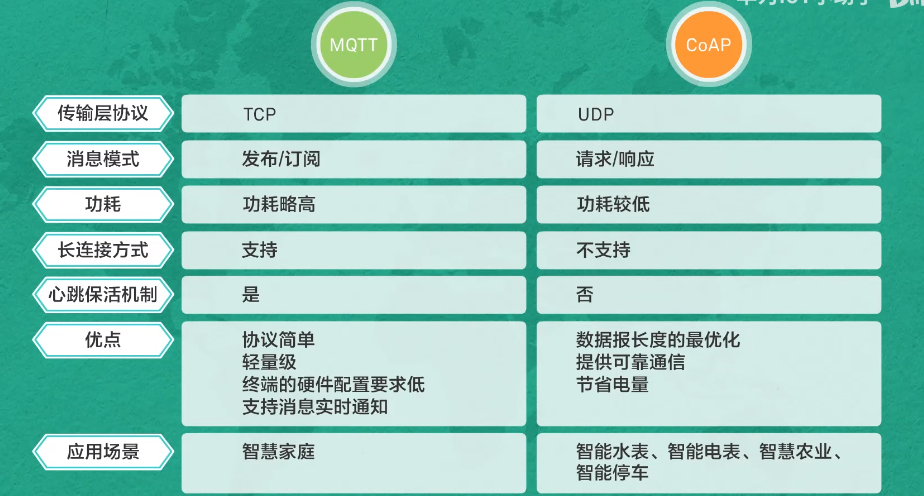
In the IoT environment, IoT platforms will also be classified according to service levels. IoT platforms are mainly divided into four major platform types: device management platform, connection management platform, application usage platform, and business analysis platform.
(1) Equipment management platform
It is mainly aimed at the access of IoT devices, data collection, monitoring and maintenance of equipment status, etc.
(2) Connection management platform
SIM card life cycle management, status monitoring, fault diagnosis, etc.
(3) Application usage platform
That is to help IoT application developers to quickly develop and deploy the IoT applications they need, etc.
(4) Business analysis platform
After collecting all kinds of relevant data, the platform performs classification processing, analyzes and provides data reports and other services.

Altra introduzione
Currently, Zongheng Intelligent Control has a data transmission device that supports the MQTT protocol. Support seamless connection with major IoT platforms! Supports local logic operations, automatic collection and reporting, automatic calibration threshold reporting, configuration software docking, wet and dry node IO detection and other special functions.
